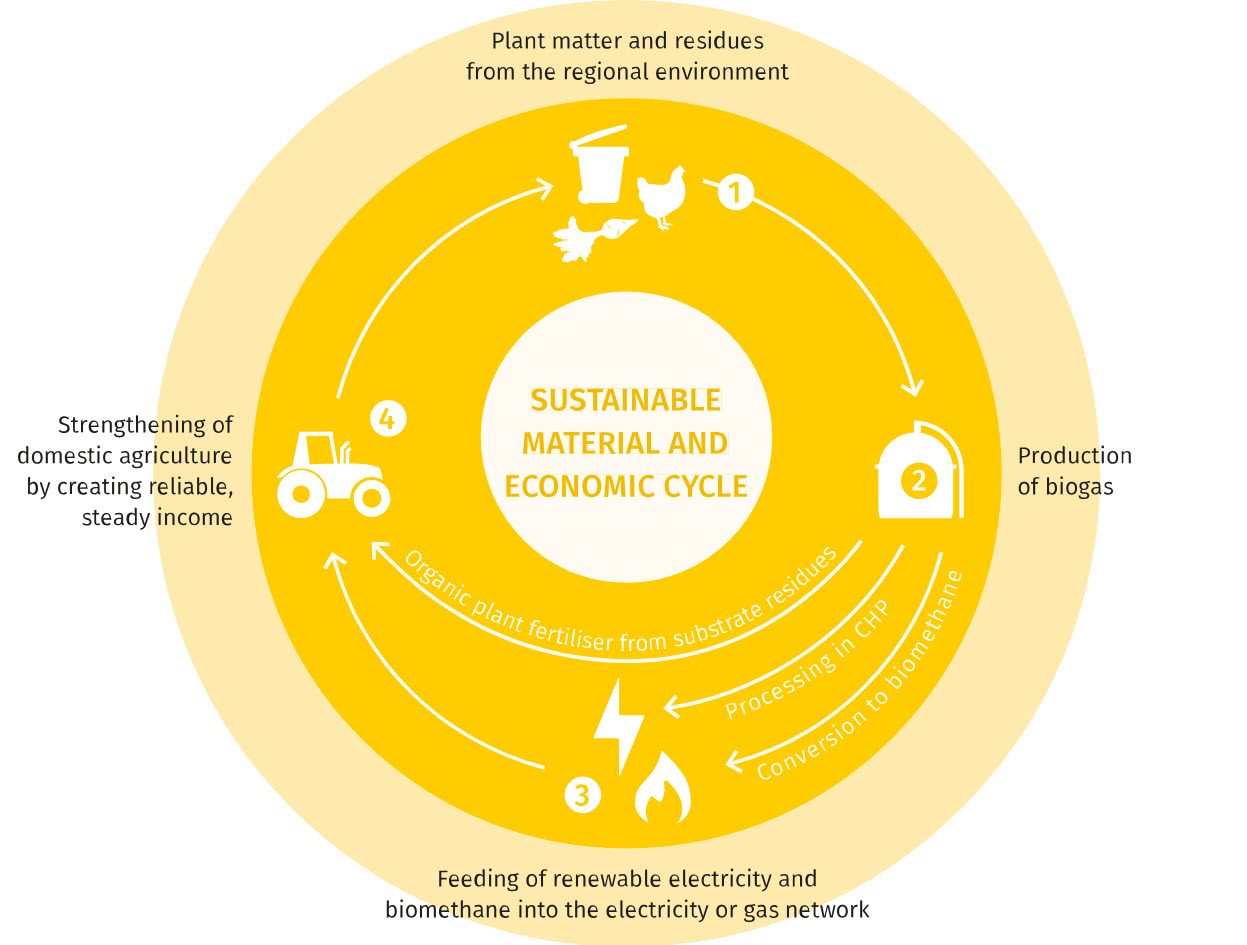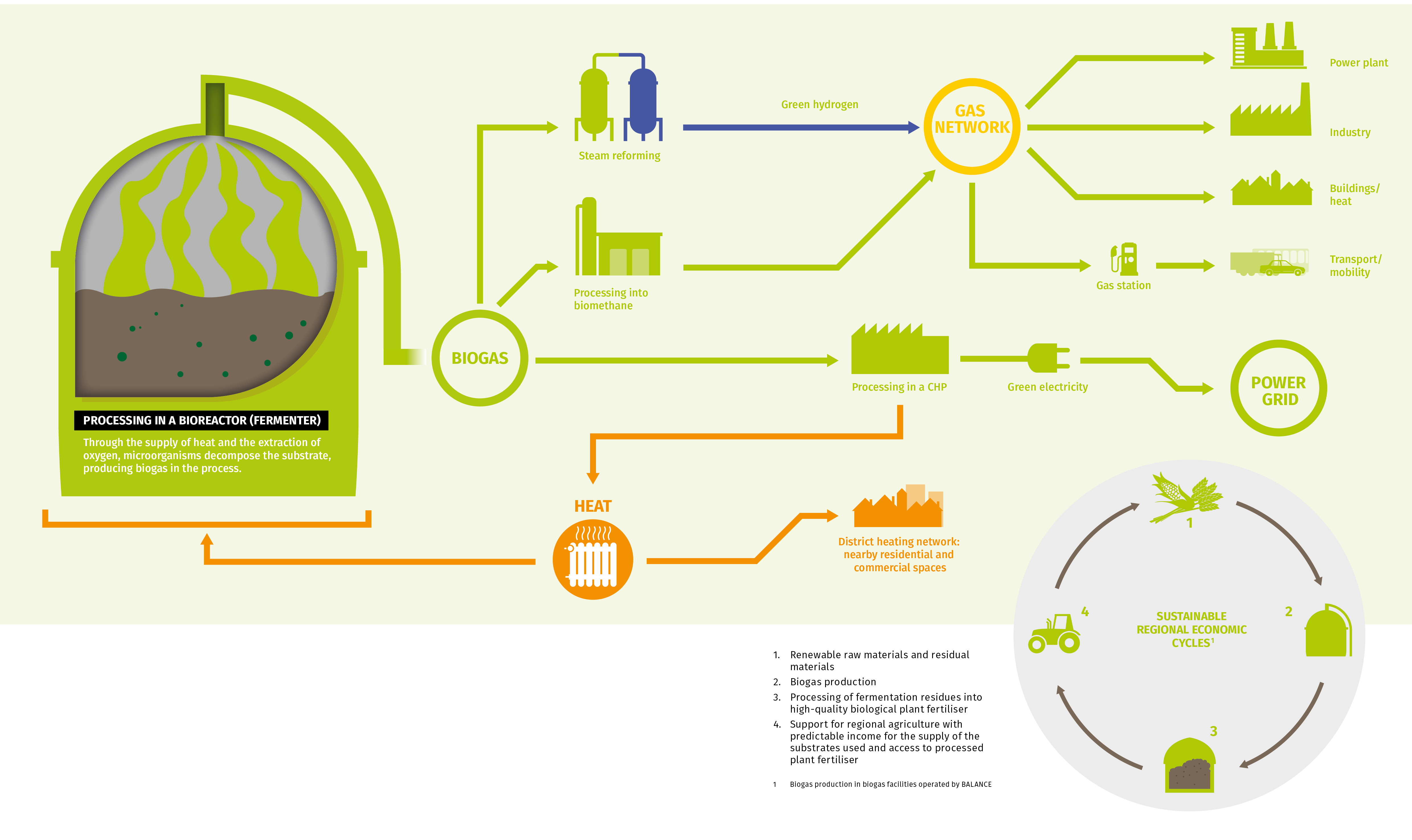Renewable biogas
Biogas – renewable energy from the region
Biogas is already an important building block and, in the future, promises to become a reliable source of electricity and heat with renewable energy. VNG is one of the largest biogas producers in Germany and is convinced that this green gas will make an important contribution to the future CO2-neutral energy supply and will continue to expand. Operating 40 locations at present, our subsidiary BALANCE Erneuerbare Energien GmbH produces biogas with a rated thermal output of 174 MW. This supplies around 50,000 homes with renewable electricity and more than 53,000 homes with green gas every year.
Sustainably produced
Our biogas facilities are fed with a substrate mixture consisting of plant materials such as corn, whole plant silage and residual materials such as dry chicken manure. The biomass ferments in digesters, producing biogas. The production of biogas only yields as much CO2 as the plant substrates have previously absorbed during growth; with the use of residual materials, even negative emissions are produced. We exclusively use residual materials and renewable raw materials from regional material and production cycles in the vicinity of the individual biogas facilities. Additionally, the residues from biogas production are also reused: they are returned to the fields as fertiliser. This is how we secure regional value creation.

Advantages of biogas: available, renewable, versatile in application
Biogas is renewable and can be used directly in combined heat & power facilities at the biogas facility to generate green electricity. It can also maintain grid stability when a stable base load is required or the load fluctuations from renewable energies such as solar or wind must be balanced. This is because reserves of biogas are always in stock and can be produced and stored regardless of the weather. It also plays a leading role in shaping the heat transition. It can provide district heating in the direct vicinity of the biogas facilities.
Biogas is renewable and can be used directly in combined heat & power facilities at the biogas facility to generate green electricity. It can also maintain grid stability when a stable base load is required or the load fluctuations from renewable energies such as solar or wind must be balanced. This is because reserves of biogas are always in stock and can be produced and stored regardless of the weather. It also plays a leading role in shaping the heat transition. It can provide district heating in the direct vicinity of the biogas facilities.

Contribution to the security of supplies
Biogas also provides an additional source of gas. As a regional product, it makes a decisive contribution to Germany’s greater independence in energy supply. This is one of the reasons why VNG has invested heavily in the development and expansion of biogas production in recent years. With 40 plants at 34 locations in Eastern Germany as well as in Lower Saxony, BALANCE Erneuerbare Energien GmbH has become one of the most important players in the German biogas market.
BALANCE Erneuerbare Energien GmbH
BALANCE Erneuerbare Energien GmbH is a wholly owned subsidiary of VNG AG. The company bundles VNG’s activities in the field of alternative energies and energy efficiency technologies. BALANCE focuses on comprehensive professional project development and participation in biogas and biomethane projects.
Glossary
Produced during the fermentation of biomass. It can be used in CHP plants for on-site electricity generation or processed to natural gas quality. The resulting biomethane can then be fed into the natural gas network
Renewable biogas with a high methane content suitable for feeding into the natural gas grid.
Law in Germany that regulates the preferential feeding of electricity from renewable sources into the power grid.
The rated thermal output is the maximum fuel energy that can be supplied simultaneously to a combustion unit, based on the lower heat value. The type of fuel used is irrelevant..